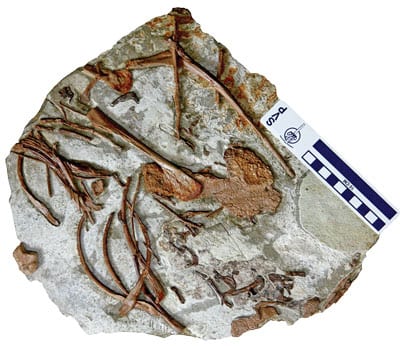Out of Place Fossils (December 28)


The geological column in our textbooks has been used by evolutionists to represent creatures evolving over millions of years. Did you realize, however, that there are many “inconvenient” fossils? Here are just a few:
- Evolutionists have to explain from where birds came. So, they assume two-legged, upright walking dinosaurs evolved into birds. Yet, a fossil dinosaur with three fully-formed birds in its stomach has been found in China.
Grass has been found in fossilized dinosaur dung (coprolite). - Yet, for a century, evolutionists have taught that grass appeared 10 million years after the dinosaurs went extinct. How could a dinosaur eat something that did not yet exist?
- The remains of a dinosaur were found alongside a fossil of a dog-like mammal. Mammals of this size were not supposed to have evolved until long after the dinosaurs disappeared.
- Fossil pollen, evidence of flowering plants, has been found in the Precambrian layer 550 mya (million years ago), but flower pollen should not appear in the fossil record until 160 mya.
- Also found in the same layers and fossil beds with dinosaur fossils are ducks, squirrels, badger-like creatures, beaver-like creatures, platypuses, bees, pine trees, frogs, and others. According to a standard evolutionary timescale, these creatures belong in different geological times and should not be there. Yet they are.
These are just a few of the evolutionists’ “inconvenient fossils” found in the fossil layers. The Flood of Noah’s day generally buried things in ecological zones where they lived but at times washed creatures in from different zones. This is the best explanation for these “inconvenient fossils.” They were buried simultaneously, because they lived simultaneously. The simplest explanation is also the correct explanation – the Flood of Noah’s day best explains these “inconvenient fossils.”
Genesis 7:21-23
Reference
Are there out-of-sequence fossils that are problematic for evolution?
